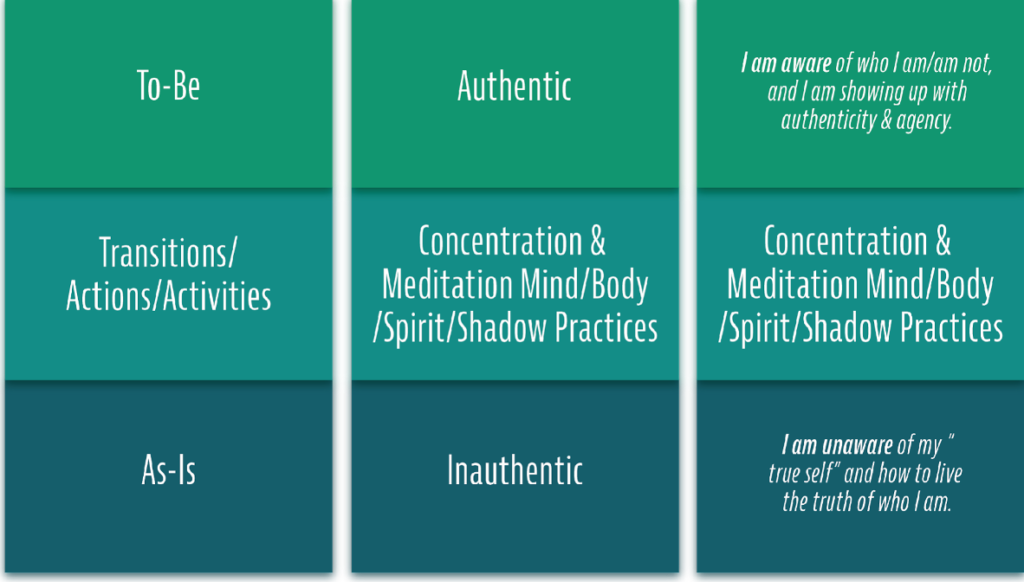Instead of saying “Trust,” say “Self-Trust” when you’re engaging in practices that deepen your awareness and understanding of who or what you are or are not.
Think: Authenticity & Agency
Self-trust is an “awareness” concept of “trust.” When I’m self-trusting, I’m engaging in practices that deepen my understanding of who I am. Also, I’ve expanded my insight of who or what I’m not. I know what it means to be authentic. I show up with “agency.”
In our Trust Model, we distinguish between “Self-Trusting” and “Trusting.” When I’m “trusting,” I’m willing and able to share my vulnerabilities, which takes the form of “sharing personal stories” with co-workers. “Trusting” is about getting to know one another. Self-Trusting” focuses on getting to know our selves and showing up as ourselves in the workplace.
What is “self-trusting?”
It’s a form of individual internal structural alignment. The greater the alignment, the more likely a team member can expand their “trust capacity” and enhance their “trust-ability.”
What’s the basis of this type of trust?
It’s the extent to which we can be “true to ourselves.” It focuses us on looking inside. It forms a foundation for the other trust dimensions. The extent we can “open up” to ourselves, the easier it will be for us to show up as ourselves for others.
Self-trusting and authenticity co-arise.
When I’m self-trusting, I’m aware of and understand who I am. At work, I’m able to be authentic and express my agency. ” Self-trust” is absent when you’re not being authentic and not expressing agency.
Making Self-Awareness-Based Trust Happen
In our reference manual, we provide several guided questions to help us move from being inauthentic to authentic.
Making Self-Awareness Based Trust Happen

Our other five dimensions of “trust” are:
Mental: When I’m trusting, I am able and willing to share my vulnerabilities.
Behavioral: When I’m trustworthy, I have aligned my workplace behaviors with expected trust behaviors.
Relational: When I’m engaged in trust relationships, I’m hearing and am being heard. I’m listening, and someone is listening to me.
Structural: When I’m experiencing organizational trust, an alignment exists between my expectations and my organization’s. A mutual desire exists for me to remain a part of the organization.
Reinforcing: When my organization ensures a virtuous trust cycle (positive trust feedback loops.), I’m working in an environment where ease of being is pervasive.
We can make self-trust happen.
